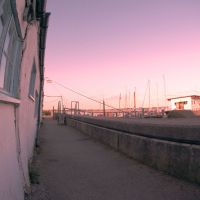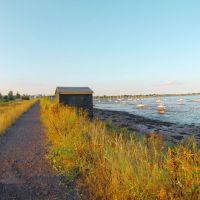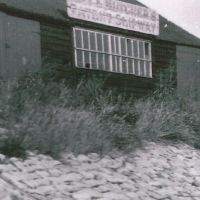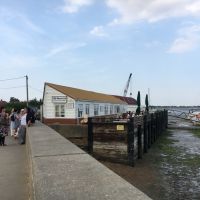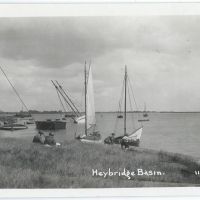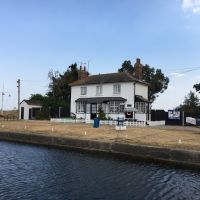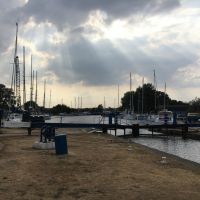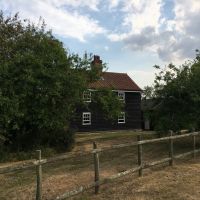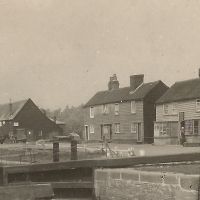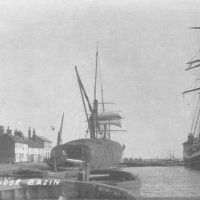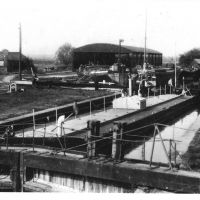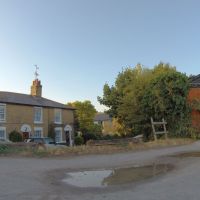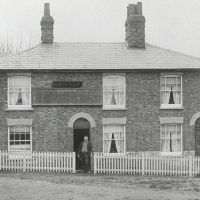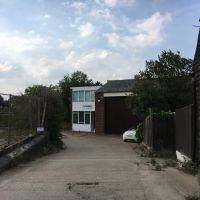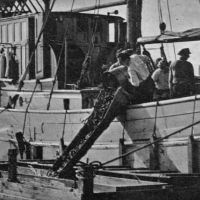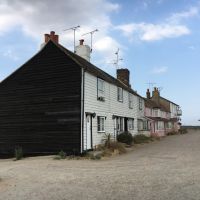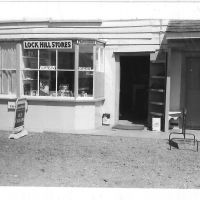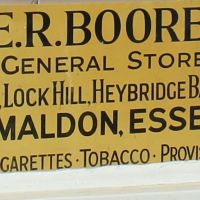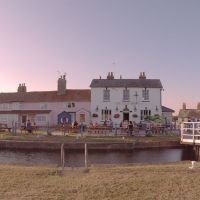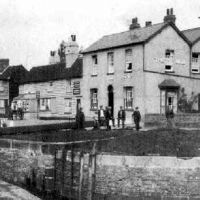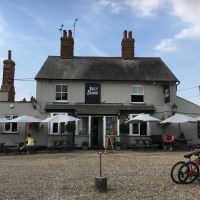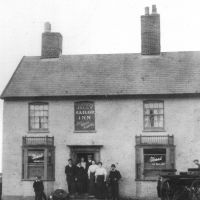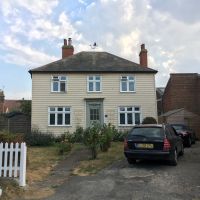Walk past the tea room along the sea wall, which was constructed in 1808 replacing an old rotten bank, and has been much built up and strengthened over the years.
The buildings you will find on your left, now used by Newham Council as part of their outdoor education centre, were the first premises of May & Butcher Ltd. Arthur Butcher, a shipwright, set up a workshop on the seawall. Joined by Mr May the company spread to the fields behind, constructing prefabricated wooden buildings. After WW1 the company bought and sold army surplus equipment, including tents and huts.
In 1920 May & Butcher began to bring in ships to be broken up. In WW2 wooden sections for aircraft were built and after the war minesweepers were brought in to be repaired or broken. The firm remained in business until the 1980s, manufacturing wooden shuttering used in bridge construction as well as their traditional gates and agricultural buildings.
Look over the seawall to your right and you will see the remains of their wharf, the concrete base for a derrick and, if the tide is low, the remains of the last minesweeper to be broken up.
Continue your walk past the playing field towards Millbeach, or perhaps turn back to find refreshment in the tea room, one of the two pubs or the kiosk on the canal side.
